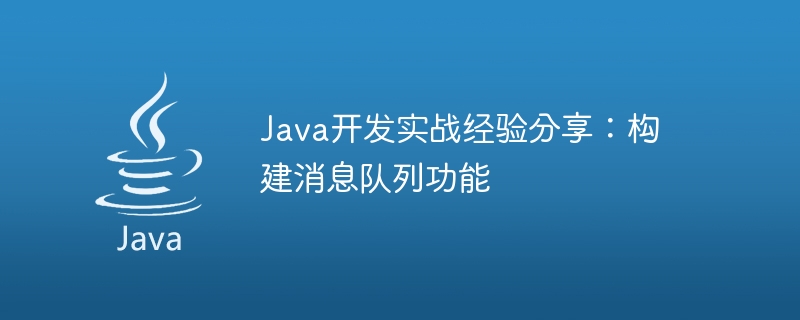

Java development practical experience sharing: building message queue function
Introduction:
With the advent of the Internet era, most applications need to process large amounts of data and news. In the traditional development model, data and message transfer between applications are usually implemented through direct function calls or database operations. However, as business requirements become more complex and scale expands, direct function calls and database operations can no longer meet the needs. In this case, using message queue as middleware to process data and messages asynchronously has become an effective solution.
1. What is a message queue?
Message queue is a mechanism for application decoupling and asynchronous processing, and it is also a typical producer-consumer model. It calls the message sender the producer and the message receiver the consumer, and implements message storage and delivery through a queue. Producers send messages to the queue, and consumers get messages from the queue for processing. Message queues can decouple producers and consumers and enable asynchronous processing, improving the scalability and stability of the system.
2. Why should we build the message queue function?
The purpose of building the message queue function is as follows:
3. How to build the message queue function?
To build the message queue function, you can choose to use an existing message queue system, such as Kafka, RabbitMQ, etc., or you can build it from scratch. The following are the basic steps to build your own message queue function:
4. Case application: Using Kafka to build message queue function
Kafka is a high-throughput distributed publish-subscribe messaging system that can well meet large-scale data processing and message delivery needs. The following is a case of using Kafka to build a message queue function to illustrate in detail:
Conclusion:
By building the message queue function, application decoupling and asynchronous processing can be achieved, improving application performance and scalability. Whether you build it from scratch or use an existing message queue system, you need to consider the format of the message, the implementation of producers and consumers, the design of the message queue, and the requirements for monitoring and management. I hope this article can provide readers with some practical experience and inspiration and help them better build the message queue function.
The above is the detailed content of Java development practical experience sharing: building message queue function. For more information, please follow other related articles on the PHP Chinese website!
 how to build a website
how to build a website
 How to use debug.exe
How to use debug.exe
 What are the mysql update statements?
What are the mysql update statements?
 How to configure Tomcat environment variables
How to configure Tomcat environment variables
 linux find
linux find
 How to solve the problem of missing steam_api.dll
How to solve the problem of missing steam_api.dll
 What are the methods to change IP in dynamic vps instantly?
What are the methods to change IP in dynamic vps instantly?
 Win11 skips the tutorial to log in to Microsoft account
Win11 skips the tutorial to log in to Microsoft account




